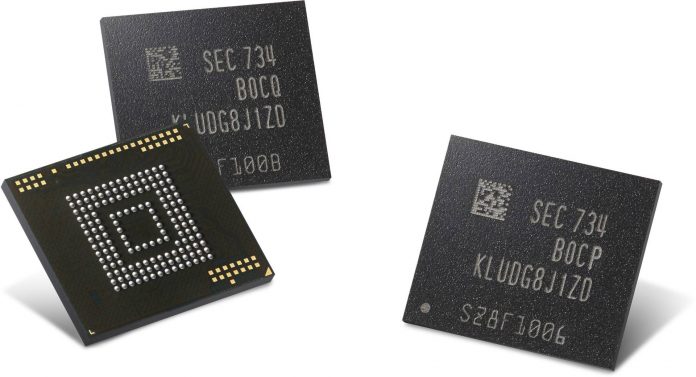
SEOUL/SINGAPORE: Investors in global chipmakers have had a rocky ride in the last few months on worries about a slowing smartphone market, but a clamor for more video content from consumers is underpinning buoyant sales for memory-chip makers.
Indeed, the earnings reports of various chipmakers and smartphone companies in the past month tell a more interesting story beyond the cooling in phone shipment volumes: smartphone makers are cramming their devices with memory to satisfy the increasing demands of consumers.
A case in point is last week’s quarterly report from Apple Inc. The Cupertino, California-based company said the iPhone X was the most popular iPhone model in the March quarter – the first cycle ever where the costliest iPhone was also the most sought after.
More upbeat assessments from Samsung Electronics Co Ltd, Qualcomm Inc, and Franco-Italian company STMicroelectronics, have also eased concerns.
Samsung last month forecast strong sales for “high-density” chips that have more processing power and bigger storage capacity – demand that will help it weather a decline in overall smartphone shipments as consumers are willing to pay for costlier and faster models that allow them to easily watch and store large amounts of video.
That puts into perspective a warning by Taiwan Semiconductor Manufacturing Co Ltd of softer smartphone sales, which was partly responsible for the recent selloff in Apple and other chipmakers.
The broader concerns about a slowdown in the chip market appear to have eased as well.
The Philadelphia Semiconductor Index, a proxy for global chipmakers that fell sharply from its peak in mid-March on initial iPhone sales concerns, has stabilized in the past two weeks, posting a 4.4 percent rise so far this year.
PURE-PLAY MEMORY
The $122 billion memory chip industry enjoyed an unprecedented boom since mid-2016, expanding nearly 70 percent in 2017 alone, thanks to robust growth of smartphones and cloud services that require more powerful chips that can store loads of data.
The pace of growth is set to more than halve as memory-chip prices come off their highs, but the outlook remains strong for pure-play memory chipmakers such as Micron Technology Inc and SK Hynix. Micron’s shares have risen 18 percent this year and Hynix’s stock has gained 8.5 percent.
Revenue at Micron, for instance, has grown at an average rate of about 65 percent in the two quarters it has reported this year, and analysts expect it to grow at an average of 30 percent for the rest of the year, according to Thomson Reuters I/B/E/S.
Micron and Hynix both trade at roughly 4 times forward 12-month earnings against a sector median of 16.7, suggesting that the stocks have room to grow.
Other chipmakers like Advanced Micro Devices Inc and Texas Instruments, which are less leveraged to the smartphone market, including those that sell to carmakers, industrial, bitcoin, and gaming companies are well set up too.
PROCESSOR CHIPS VULNERABLE
All the same, the slowdown in smartphone shipments is bad news for chipmakers that design microprocessors: each phone needs just one microprocessor chip versus rapid growth of memory content in devices.
Global smartphone shipments fell 2 percent in the first quarter, following a 9 percent drop in the fourth quarter, according to market research firm StrategyAnalytics.
Qualcomm, whose Snapdragon processors power many popular smartphone models, recently showed just how far it is willing to go to hedge against a slowdown after revenue from its key licensing business slumped 44 percent in the latest quarter.
The company, which charges a fee for its chip patents based on a percentage of the selling price of a smartphone, said it would cap the phone price used to calculate that fee at $400. More expensive phones, which can sell for $1,000, would still be treated as $400 for the purpose of the Qualcomm license fee.
TSMC, whose fortunes are more closely tied with the broader smartphone industry as it is the world’s largest contract chipmaker, felt the slowdown more acutely in the latest quarter.
Qualcomm and TSMC stocks are down 21 percent and 2.6 percent respectively so far this year.





















